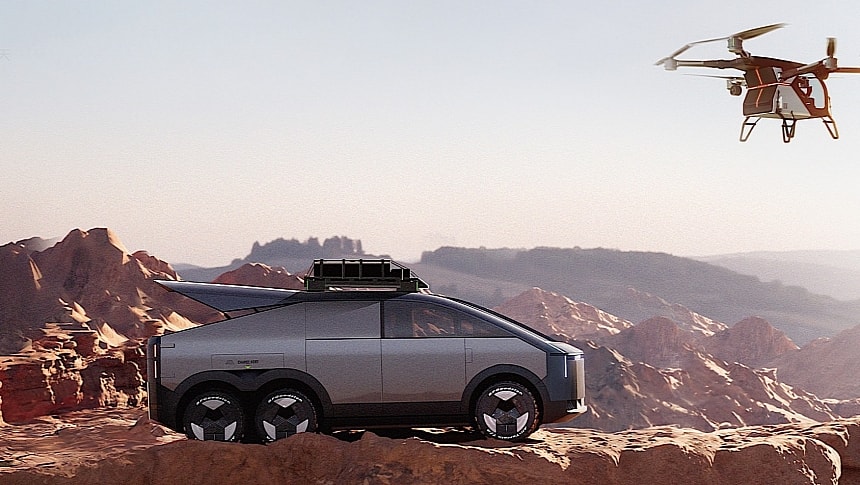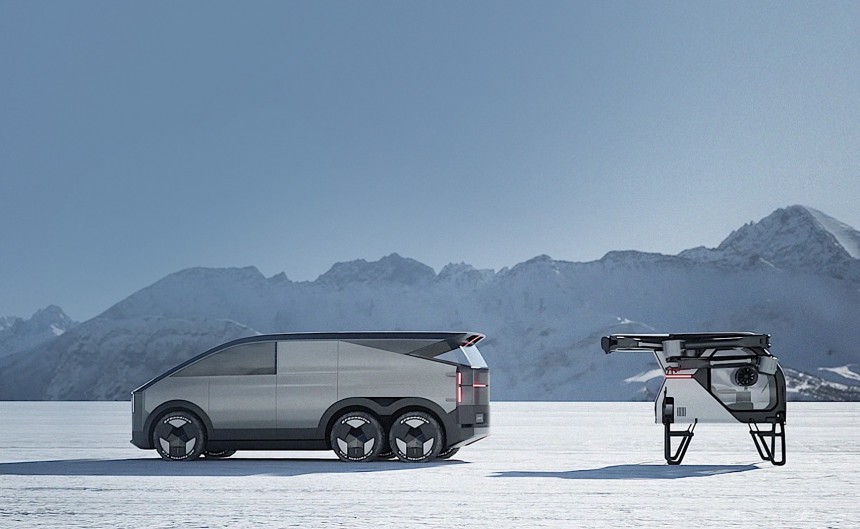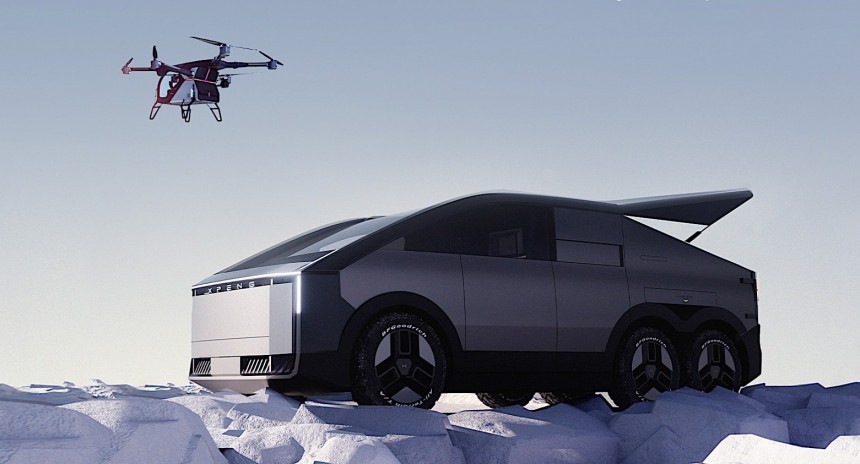Say what you will about China, but the place certainly has been a hotbed for innovation in recent years, especially in the field of transportation. The world's largest car market is leading the charge in electrification (at least in terms of number of EVs sold, as it's responsible for roughly 60 percent of Earth's total), but it seems to have also taken point in a nascent industry that has immense potential: flying cars.
A large number of Chinese companies are already working on this, but few of them come close to the size and power of one called Xpeng Aeroht. Established in 2013, the company has grown into a giant that has already produced five generations of flying cars.
But if so, where are these flying cars, you ask. Well, technically they are not here yet, doing their thing serving civilians, but they did inform Xpeng on how to make them a reality of our time, taking part in no less than 15,000 flight tests over the years.
The three main Xpeng products currently listed by the Chinese are the X1, X2, and T1, topped by an unnamed flying supercar. All of them have been presented over the past five years, but none have made it into production for the masses yet.
A fifth model was announced in January 2024 at the Consumer Electronics Show (CES) in Las Vegas as the world's “first modular flying car to be mass-produced for individuals." Quite a bold statement, like many others we've seen come to light over the past few years in this industry, but one that unlike the others does seem to come with ambition backed by real intentions and progress.
Xpeng calls the design at the moment the Land Aircraft Carrier, or the Modular Flying Car, or the Low-Altitude Air Mobility Explorer. The company doesn't yet seem very determined on how to publicly call the creation, so it refers to it internally as the X3-F.
The creation is in fact a pair of vehicles. On the one hand, we have the so-called ground module, which, for all intents and purposes, is a 6x6 van with clear off-roading capabilities and rear-wheel steering. The thing is capable of carrying at most five passengers.
Full details on what powers it were not released, aside from the fact it will use a range-extending electric drive system that will be used for both its needs and those of the eVTOL tender it carries.
That's right, that large space at the back, supported by two axles, is not meant for carrying camping equipment, but a fully-fledged flying car. Or, should I say, flying passenger container, because if it weren't for the 270-degree panoramic windows, a container is exactly what it would have looked like.
The air module is, in essence, an add-on that can autonomously separate and interact with the ground-based mothership. It can carry two passengers through the air thanks to the lifting power supplied by a set of six propellers, three on each side.
The VTOL is electric as well, relying on a distributed electric propulsion system - and in this case, too, we have no information yet on exactly what that means. It can be flown either manually or autonomously, but its range and altitude are not known at the moment.
The idea behind this design is pretty simple. A family or group of friends climb inside the six-wheeled van, drive to wherever, and then mount the flying car in the back for a joyride. They come back, and can recharge the eVTOL right from the van itself. In some sense, it's like owning a yacht with its own speedboat for adrenaline-packed rides.
The idea might seem too far-fetched to actually make it into this world, but Xpeng is pretty serious about it. At the end of March, the company announced that its Type Certificate (TC) application had been accepted by the Civil Aviation Administration of Central and Southern China (CAAC).
That's a certification all aircraft made in that part of China need to be able to enter the airworthiness certification phase, marking a huge leap forward for the vehicle combo. Naturally, the clearance has to do with the air module of the vehicle system.
Xpeng plans to move pretty fast with this design, so don't be all that surprised if we get to see it in the air for testing very soon, and in use on the civilian market shortly after that. The company says it will open the pre-order books for the vehicles in the fourth quarter of the year but makes no mention of how much the van-eVTOL pair might cost. We also don't know if it plans to sell the thing on other markets.
The start of mass production and even deliveries of the X3-F are planned for the fourth quarter of 2025.
But if so, where are these flying cars, you ask. Well, technically they are not here yet, doing their thing serving civilians, but they did inform Xpeng on how to make them a reality of our time, taking part in no less than 15,000 flight tests over the years.
The three main Xpeng products currently listed by the Chinese are the X1, X2, and T1, topped by an unnamed flying supercar. All of them have been presented over the past five years, but none have made it into production for the masses yet.
A fifth model was announced in January 2024 at the Consumer Electronics Show (CES) in Las Vegas as the world's “first modular flying car to be mass-produced for individuals." Quite a bold statement, like many others we've seen come to light over the past few years in this industry, but one that unlike the others does seem to come with ambition backed by real intentions and progress.
Xpeng calls the design at the moment the Land Aircraft Carrier, or the Modular Flying Car, or the Low-Altitude Air Mobility Explorer. The company doesn't yet seem very determined on how to publicly call the creation, so it refers to it internally as the X3-F.
Full details on what powers it were not released, aside from the fact it will use a range-extending electric drive system that will be used for both its needs and those of the eVTOL tender it carries.
That's right, that large space at the back, supported by two axles, is not meant for carrying camping equipment, but a fully-fledged flying car. Or, should I say, flying passenger container, because if it weren't for the 270-degree panoramic windows, a container is exactly what it would have looked like.
The air module is, in essence, an add-on that can autonomously separate and interact with the ground-based mothership. It can carry two passengers through the air thanks to the lifting power supplied by a set of six propellers, three on each side.
The VTOL is electric as well, relying on a distributed electric propulsion system - and in this case, too, we have no information yet on exactly what that means. It can be flown either manually or autonomously, but its range and altitude are not known at the moment.
The idea might seem too far-fetched to actually make it into this world, but Xpeng is pretty serious about it. At the end of March, the company announced that its Type Certificate (TC) application had been accepted by the Civil Aviation Administration of Central and Southern China (CAAC).
That's a certification all aircraft made in that part of China need to be able to enter the airworthiness certification phase, marking a huge leap forward for the vehicle combo. Naturally, the clearance has to do with the air module of the vehicle system.
Xpeng plans to move pretty fast with this design, so don't be all that surprised if we get to see it in the air for testing very soon, and in use on the civilian market shortly after that. The company says it will open the pre-order books for the vehicles in the fourth quarter of the year but makes no mention of how much the van-eVTOL pair might cost. We also don't know if it plans to sell the thing on other markets.
The start of mass production and even deliveries of the X3-F are planned for the fourth quarter of 2025.












